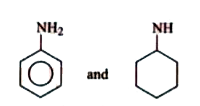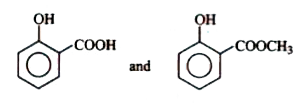Collenchyma can be differentiated from parenchyma by
Cellulosic wall
Living protoplasm
Pecto-cellulosic deposits at corners
No protoplasm
The correct Answer is:C
Step-by-Step Solution:
1. Understanding the Question: The question asks how collenchyma can be differentiated from parenchyma. Both are types of plant tissues, but they have different structural characteristics.
2. Identifying Key Characteristics:
- Collenchyma: This tissue is characterized by its thickened cell walls, which provide support and flexibility to the plant. The thickening is primarily due to the presence of pectin and hemicellulose.
- Parenchyma: This tissue has thinner cell walls and is generally involved in storage, photosynthesis, and tissue repair. Its walls are not as thickened as those of collenchyma.
3. Analyzing the Cell Wall Composition:
- In collenchyma, the cell walls are thickened at the corners where the cells meet, due to pectosilulosic deposits.
- In parenchyma, the cell walls are uniform and lack the specific thickening found in collenchyma.
4. Conclusion: The primary differentiating factor between collenchyma and parenchyma is the presence of pectosilulosic deposits at the corners of collenchyma cells, which are not found in parenchyma cells.
5. Final Answer: Collenchyma can be differentiated from parenchyma by the presence of pectosilulosic deposits at the corners of the cells.
- Collenchyma: This tissue is characterized by its thickened cell walls, which provide support and flexibility to the plant. The thickening is primarily due to the presence of pectin and hemicellulose.
- Parenchyma: This tissue has thinner cell walls and is generally involved in storage, photosynthesis, and tissue repair. Its walls are not as thickened as those of collenchyma.
- In collenchyma, the cell walls are thickened at the corners where the cells meet, due to pectosilulosic deposits.
- In parenchyma, the cell walls are uniform and lack the specific thickening found in collenchyma.
Topper's Solved these Questions
- HISTOLOGY AND ANATOMY OF FLOWERING PLANTSBook:AAKASH SERIESChapter:HISTOLOGY AND ANATOMY OF FLOWERING PLANTSExercise:EXERCISE - I (THE TISSUES SYSTEMS)
Explore 41 Videos
- HISTOLOGY AND ANATOMY OF FLOWERING PLANTSBook:AAKASH SERIESChapter:HISTOLOGY AND ANATOMY OF FLOWERING PLANTSExercise:EXERCISE - I (ANATOMY OF DICOTYLEDONOUS AND MONOCOTYLEDONOUS PLANTS)
Explore 60 Videos
- ENVIRONMENTAL ISSUESBook:AAKASH SERIESChapter:ENVIRONMENTAL ISSUESExercise:Exercise-III (Previous AIPMT/NEET Questions)
Explore 41 Videos
- HUMAN HEALTH DISEASEBook:AAKASH SERIESChapter:HUMAN HEALTH DISEASEExercise:EXERCISE - III (PREVIOUS AIPMT/NEET QUESTIONS)
Explore 56 Videos
Similar Questions
Knowledge Check
 Can be differentiated by : Acarbylamine reactionBH2SO4Cdiazotisation followed by β - naphtholDmustard oil reaction
Can be differentiated by : Acarbylamine reactionBH2SO4Cdiazotisation followed by β - naphtholDmustard oil reaction
Can be differentiated by :AFeCl3BNaOHCNaNO2+HClDFehling's solution Can be differentiated by : ANaOHBNa metalCNaHCO3DFeCl3
Can be differentiated by : ANaOHBNa metalCNaHCO3DFeCl3
Corms can be differentiated from rhizome in having
View SolutionChondrichthyes can be differentiated from osteichthydes externally by
View SolutionGrey Heron can be differentiated from flamingo by
View SolutionA morula can be differentiated from blastula in
View Solution Can be differentiated by :
Can be differentiated by :
View Solution


 can be differentiated by
can be differentiated by